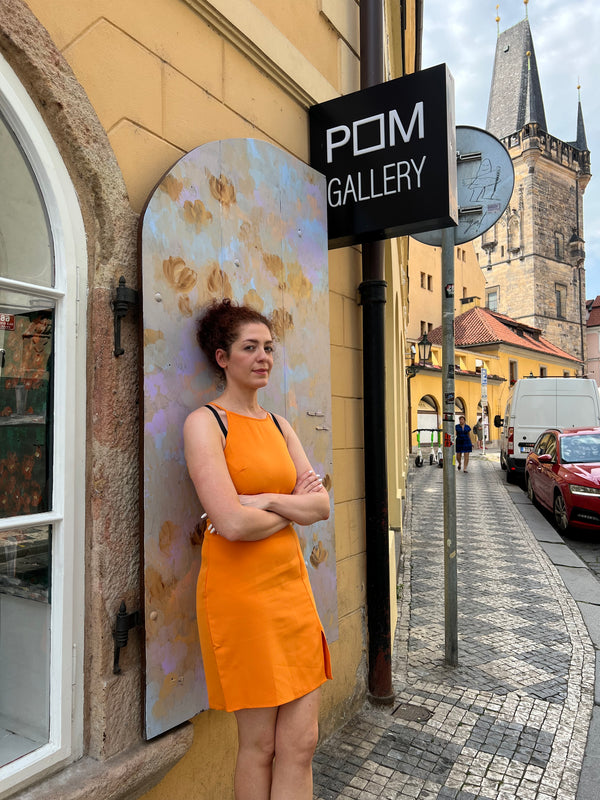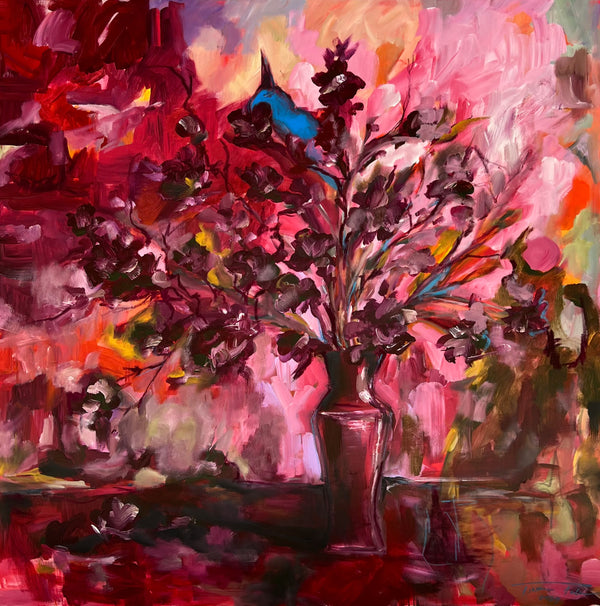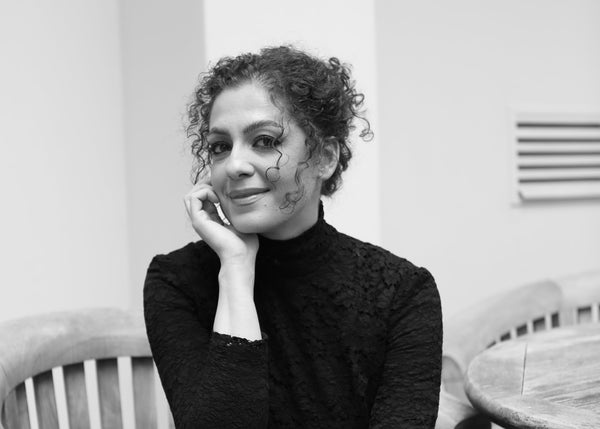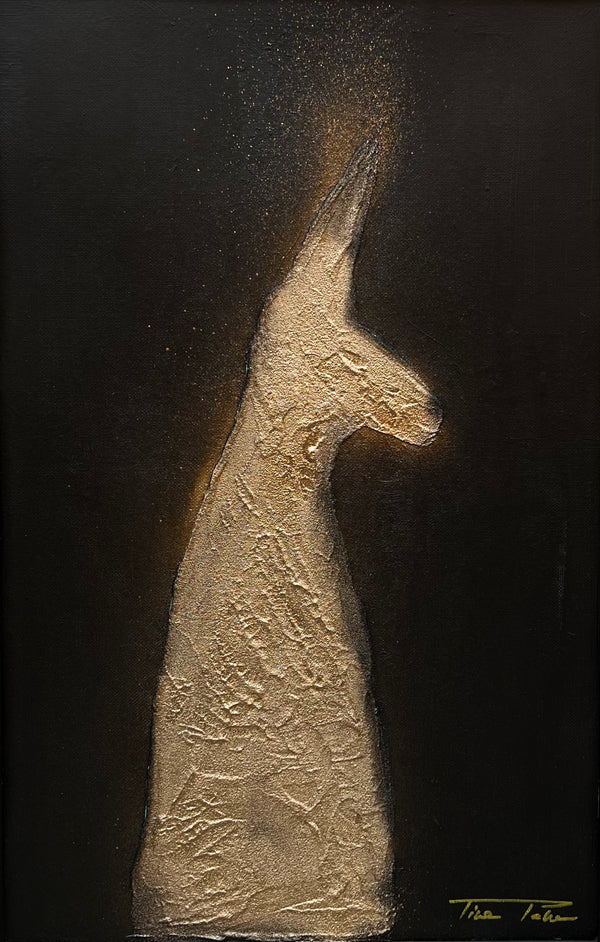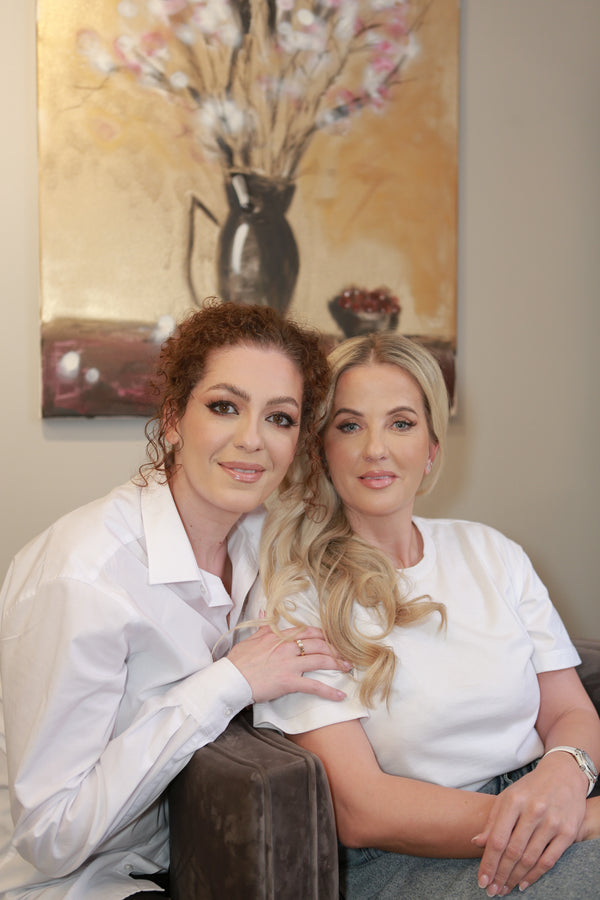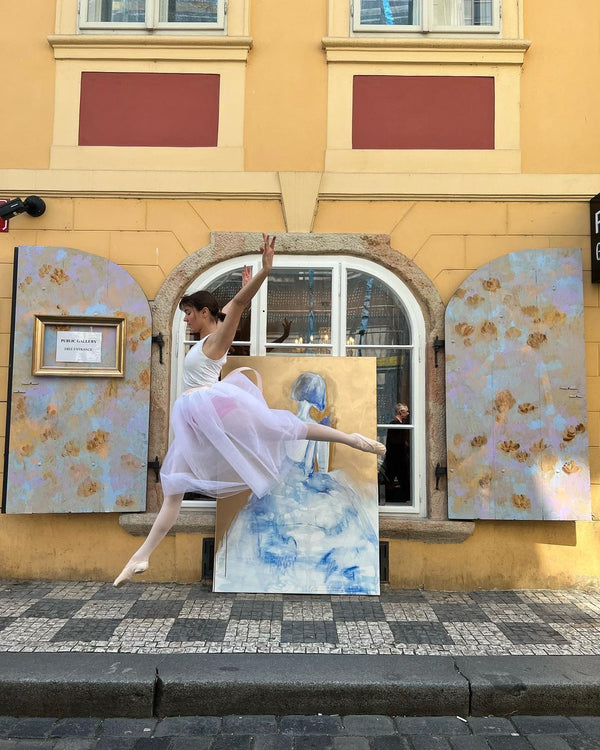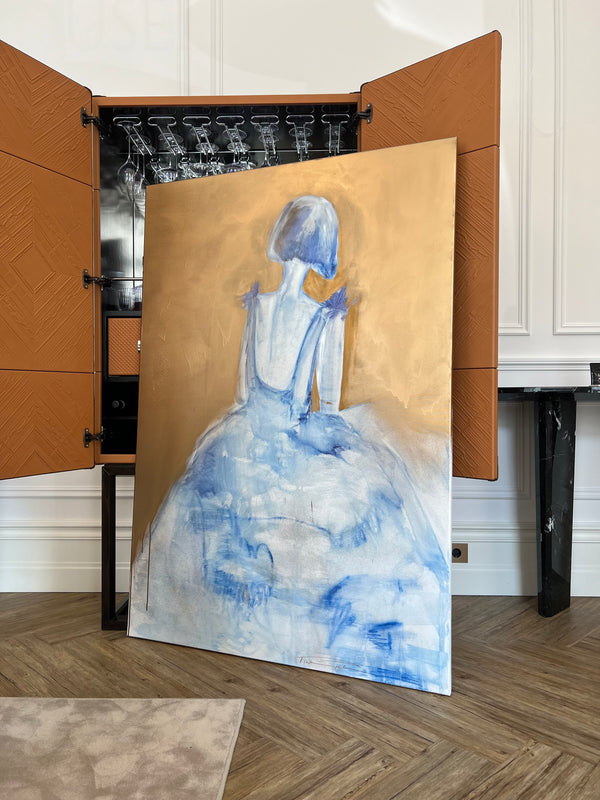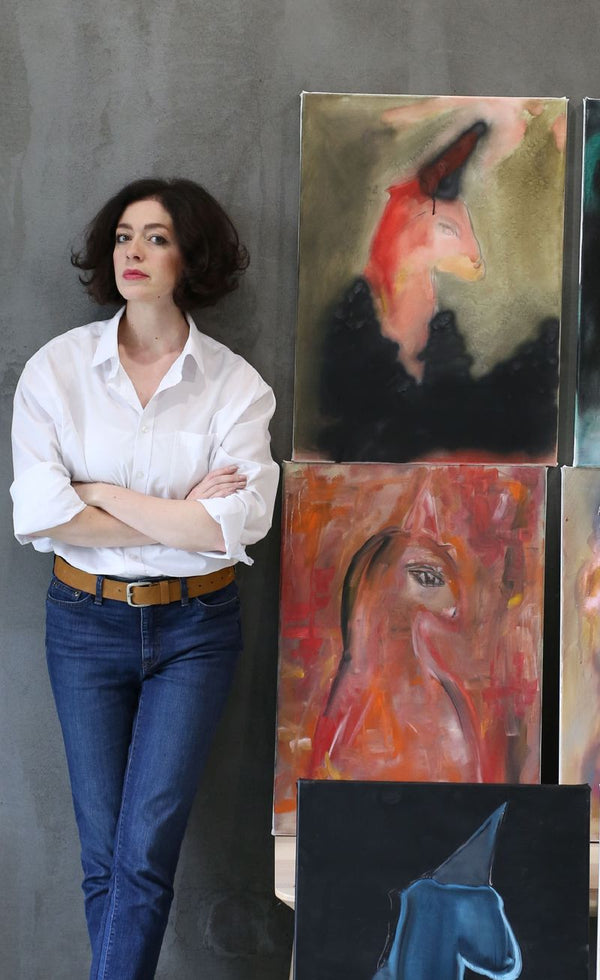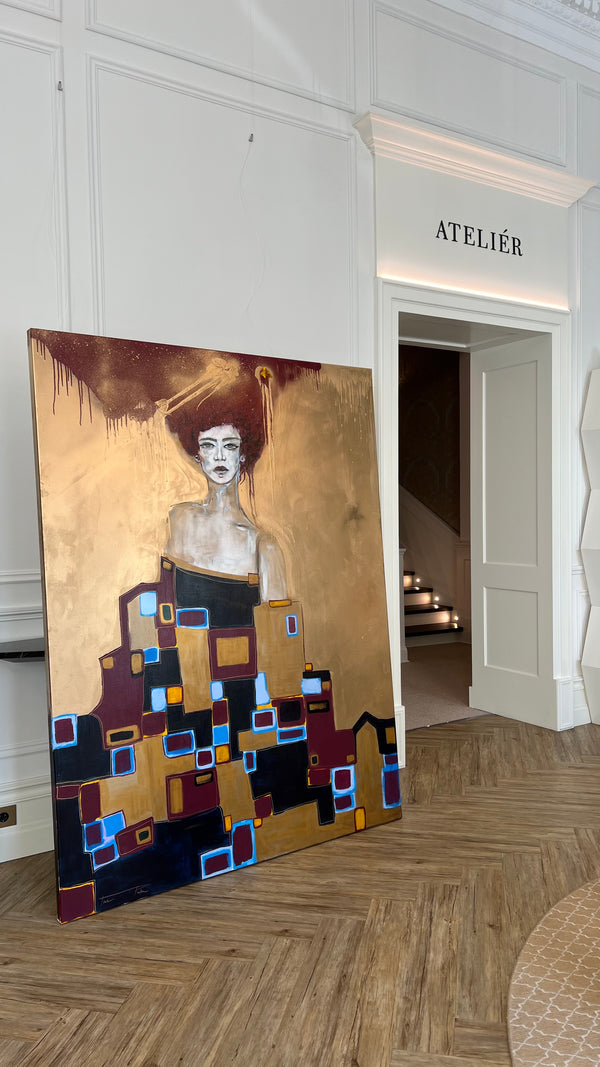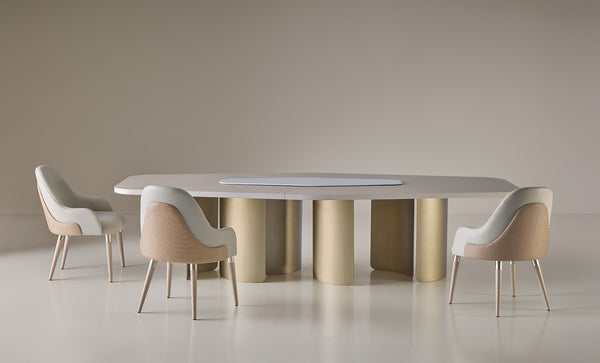Tina Palu
Tina Palu
“I enjoy visual art; I love creating something that amazes and visually excites people.”
Tina Palu is an inspiring artist and co-owner of POM Gallery, who has been active on the Czech art scene for over twenty years. With her passion and creative energy, she proves that formal education is not always a prerequisite for artistic success. We spoke with her about how she entered the world of art, what inspires her, and why an artist must also be a good entrepreneur.
How would you introduce yourself to our readers?
I see myself as a complex artist, a true artistic soul. I love films, books, and moving between genres—whether it’s Kant or a romantic novel. I also enjoy classical music; I even played the organ for ten years. Generally, every artist or painter appreciates other forms of art that go beyond their own discipline.
Can you tell us about your path to painting? What do you enjoy most about this medium?
I really started painting at seventeen. At secondary school, I had a classmate who played piano and also drew. We shared a love of films, though at that time I couldn’t draw. I learned gradually through sketching portraits of classmates. Later I studied under Jan Jüngling, who worked at the DISK Theatre and even prepared me for entrance exams to the Academy of Fine Arts. My family didn’t approve, so I turned to photography—it was less obvious than painting.
I photographed weddings, but also artistic projects. After about ten years, a Hollywood photographer discovered me on Instagram. Within a month, we connected, and I began traveling to L.A. and New York, where I had the opportunity to photograph Hollywood stars. My career in L.A. grew quickly, and I spent more and more time there. Eventually, I had to decide whether to settle in L.A. or stay in Prague. I chose Prague. I kept my studio here, and together with my husband we opened BOX51. All the while, I continued painting, exhibiting my works in cafés where they gained great response.
Was there a turning point when you realized you would dedicate yourself fully to art?
My path was gradual—there wasn’t a single impulse. Whatever business I was involved in, I always painted at night. My temperament gave me the energy to keep painting even while working. Hanging my canvases in cafés led to buyers and sales. Eventually I realized I could make a living from painting alone.
The real turning point, however, came when my friend Pavlína K. offered to help me financially to launch an independent gallery project. That’s how POM Gallery was born.
Your works often reference other artists, such as Gustav Klimt, Egon Schiele, or Frida Kahlo. What speaks to you in their work?
With Schiele, I share the fact that neither of us has academic training—we both work intuitively. I never copied him, but I admire Klimt. At first, he painted academic portraits without much recognition. When he shifted to simplified forms, ornamental motifs, and used gold and mosaic-like patterns, he created something both accessible and brilliant.
Frida Kahlo inspires me less with her paintings and more with her life. She represents freedom and suffering—a universal figure into which anyone can project meaning. I often use her as a symbol, a metaphorical tool. I like acknowledging inspiration from others, then transforming it—changing colors or simplifying forms—to fit my own style.
Symbols appear frequently in your paintings. What does the unicorn mean to you?
Almost every painter obsesses over a shape. For me, it’s the triangle—the foundation of composition. But I can’t just paint triangles. Geometric forms like the triangle or square were explored long before me by Malevich or Kandinsky. So I began inscribing a unicorn into the triangle in linear form, filling it with texture. The unicorn often represents a figure—a metaphor.
In one of my works, there are 1,526 unicorns, each depicted as characters from Jane Austen’s novels. The unicorn as a symbol represents purity, innocence, and dreaming—and art, after all, is also about dreaming.
What are your future plans? Any upcoming exhibitions?
Galleries prefer artists with a recognizable style or theme. I love exploring multiple themes—unicorns, abstractions, figurative works, flowers. For me, art is about discovery, growth, and charting my own evolution. That’s why it made sense to open a space dedicated entirely to my work—POM Gallery.
Do you have advice for artists on how to present themselves and their work online?
Many think it’s enough to post a few images online. It doesn’t work that way. You need a well-photographed portfolio and an archive of around fifty works. Today, people also want insight into the creative process. Personally, I prefer promoting my art through humor—funny Reels often bring new followers to my Instagram. Another key factor is price transparency.
What would you say to young people or emerging artists who want to create but fear there is no place for them in the art world?
Stop playing the role of the mysterious, inaccessible artist. You have to put yourself out there, and that requires business sense. Without an entrepreneurial mindset and a plan, you cannot sustain your art.
For me, only 10–15% of my time is spent on large, deeply fulfilling works. The other 85% is accepting commissions and actively seeking clients. The market is saturated—people don’t “need” paintings at home—so networking is essential. Invite people to exhibitions, cafés, galleries. Overcome the fear that people might not like your work. I face that fear every day. It never disappears, but you must confront it.
That’s why I sometimes take my paintings to Charles Bridge, to face my fear of criticism directly.
To conclude, I’d say: no one will save you—you have to save yourself, and overcome your fear.
Where to see Tina’s work
You can view and purchase Tina Palu’s paintings at POM Gallery in Malá Strana, Prague, or at Dušek Décor in Palmovka. You may also encounter Tina performing on Charles Bridge, where she transforms into characters such as a geisha.
Text: Barbara Kurzoková
